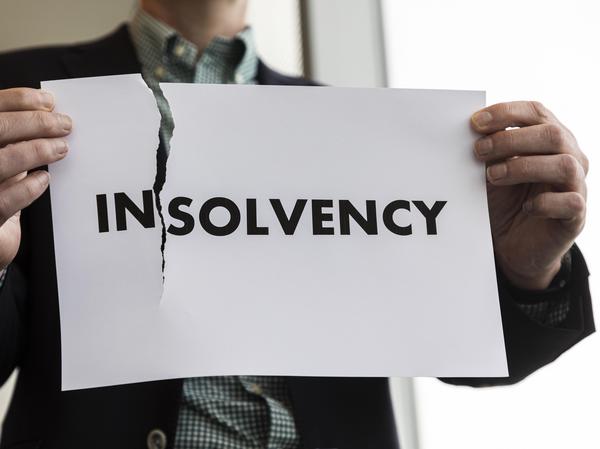The reconstruction reserve
Is your company eligible?
Bart De Neve, Senior Consultant, Bart Janssens, Senior Manager BDO Tax
The government has already introduced a lot of measures to help curb the severe economic impact of the COVID-19 pandemic. On the fiscal side, for example, there is the reconstruction reserve – a measure to support not only small but also large companies in restoring their solvency position. Is your company eligible for this support measure?
Companies will be given the opportunity (read: no obligation) to establish an exempted reserve during the assessment years 2022, 2023 and 2024. This allows you to exempt part or all of the profit for the financial year from corporate income tax as a tax-free reserve. As with any exemption regime, a number of conditions and restrictions apply.
Conditions
Companies wishing to apply the exemption regime must satisfy the following conditions:

Inviolability condition
You must book the reconstruction reserve in one or more separate accounts on the liabilities side of the balance sheet (under the tax-free reserves). As soon as you no longer meet this condition of inviolability, the reconstruction reserve becomes taxable.
Preservation of equity capital
In 3 cases, you must still take back the reconstruction reserve, even if the condition of inviolability is met:
- when the company buys its own shares. In this case, the reconstruction reserve is regarded as profit in that taxable period in the amount of the value of the purchase at the time of acquiring the own shares;
- when the company declares or distributes dividends (including the liquidation reserve). In this case, the reconstruction reserve is taxable for the amount of the dividend;
- when the company makes a capital reduction or any other reduction or distribution of equity capital. In this case, the reconstruction reserve is taxable up to the amount of the capital reduction or distribution.
The concept of ‘any other reduction or distribution of equity capital’ is given a broad application. For example, the distribution of directors’ fees also has the effect of making the reconstruction reserve (or possibly part of it) taxable.
However, a distribution to employees of a profit bonus or a bonus in the form of shares does not fall under the broad definition and therefore does not lead to a mandatory withdrawal from the reconstruction reserve.
This always concerns a distribution that can be made from the time of the establishment of the reconstruction reserve until the liquidation of the company. This means that the reserve is only temporarily exempted and will therefore be taxed sooner or later – at the latest upon the company’s liquidation/settlement. Moreover, it does not matter whether the distribution is charged to the reconstruction reserve itself or to another asset.

“The profit that you use for the reconstruction reserve is no longer available for the liquidation reserve.”
Employment condition
To be permitted to establish the reconstruction reserve, your company must maintain its level of employment. If the 620 account – remunerations and direct social benefits – falls by more than 15% compared to the closing date of the financial year that ended in 2019, the reconstruction reserve will be partially taxed, meaning that the company must maintain an employment level of 85% in order not to be taxed. If the employment level falls below 85%, the reconstruction reserve becomes taxable for the difference between 85% of the amount in financial year 2019, on the one hand, and the amount from the financial year in question, on the other. The latter amount then becomes the new threshold for the next year in which the employment level continues to fall.
Limitations
Excluded companies
Certain companies cannot apply the reconstruction reserve, namely:
Limits
The amount of the exempted reserve to be established is restricted by 3 limits:
- Operating loss. The exempted reserve can be established to the extent of the amount of the accounting (non-fiscal) operating loss incurred for the financial year on the closing date of the financial year in 2020 (cf. code 9901 in the annual accounts). Companies with a closing date on 31 December 2020 (according to calendar year) must take the 2020 loss into account for the establishment of the exempted reserve. If the company has an operating profit, it will not be entitled to the regime of the reconstruction reserve. Companies with a closing date between 1 January 2020 and 31 July 2020 can choose between 2 options. They can either take the loss of financial year 2020 into account to establish an exempted reserve, or they can take the loss of financial year 2021. Note: once the choice is made, it is binding and irrevocable.
NOTE: Did your company have to bear very heavy financial costs in 2020 which, despite the accounting operating profit, ultimately led to an accounting loss in 2020? If so, the company will not be able to apply the tax regime of the reconstruction reserve.
- Absolute limit. The exempted reserve may not exceed €20 million.
- Taxable reserved profit. In the assessment years 2022, 2023 and 2024, your company can only establish an exempted reserve up to the amount of the taxable reserved profit for the taxable period in which the reserve is established (code 1080 PN).
Formalities
You must submit a form with the declaration for the tax years in which your company wishes to claim the exemption.
Combination with other tax regimes
It is important that you comprehend all facets of the reconstruction reserve. Only then can you correctly assess its interaction with other tax regimes. The taxable part of the reconstruction reserve – for example, when the company has made a dividend distribution after the establishment of the exempted reserve – can be compensated with (possibly transferred) deductions, such as the dividend received deduction, the innovation income deduction, the investment deduction, the group contribution, the notional interest deduction, etc.
Carry-back. You can combine the reconstruction reserve with another measure taken by the government in the context of combating the economic consequences of the COVID-19 pandemic: namely, the one-off carry-back scheme (also called the backward loss offset or early loss deduction). On the basis of the carry-back, it is possible that the losses were already applied in assessment year 2020. But that does not prevent you from using those same losses again as a basis for the reconstruction reserve.
Fiscal basket. The application of losses carried forward can lead to a minimum taxable base through the application of the basket of €1 million. After all, if a company has a profit of more than €1 million after applying the group contribution, 30% of the amount in excess of this limit will always be taxed. However, by establishing an exempted reserve (read: reconstruction reserve) a company can avoid this minimum taxable base, because in that case the taxable reserved profit is reduced (or even decreased to zero). This allows you to bring the threshold of the basket below €1 million, thereby neutralising the restrictions of the basket and allowing you to still apply other deductions in full.
Liquidation reserve. If your company establishes the exempted reconstruction reserve, the profit used for this purpose will not be available for the establishment of a liquidation reserve. Thus, you have to weigh up both regimes. On the other hand, you will be able to establish a liquidation reserve when the reconstruction reserve becomes taxable and you transfer that reserve to a revenue account.
EBITDA. By establishing an exempted reserve, the taxable reserved profit decreases. This can have adverse consequences – for the interest deduction limitation, for example. After all, a decrease in the taxable EBITDA reduces the deduction capacity in the taxable period in which you establish the exempted reserve.
Tax shelter. The establishment of a reconstruction reserve can negatively influence the tax shelter for audio-visual works or performing arts. The exemption, after all, is limited to 50% of the taxable reserved profit before the establishment of the exempted reserves.
Because of all these possible interactions, it is important to weigh up, on a case-by-case basis, the different tax regimes and their fiscal impact on the tax ultimately due or to be recovered. Thus, you must properly assess whether or not the establishment of a (possibly temporary) exempted reserve will be to your company’s advantage.




















